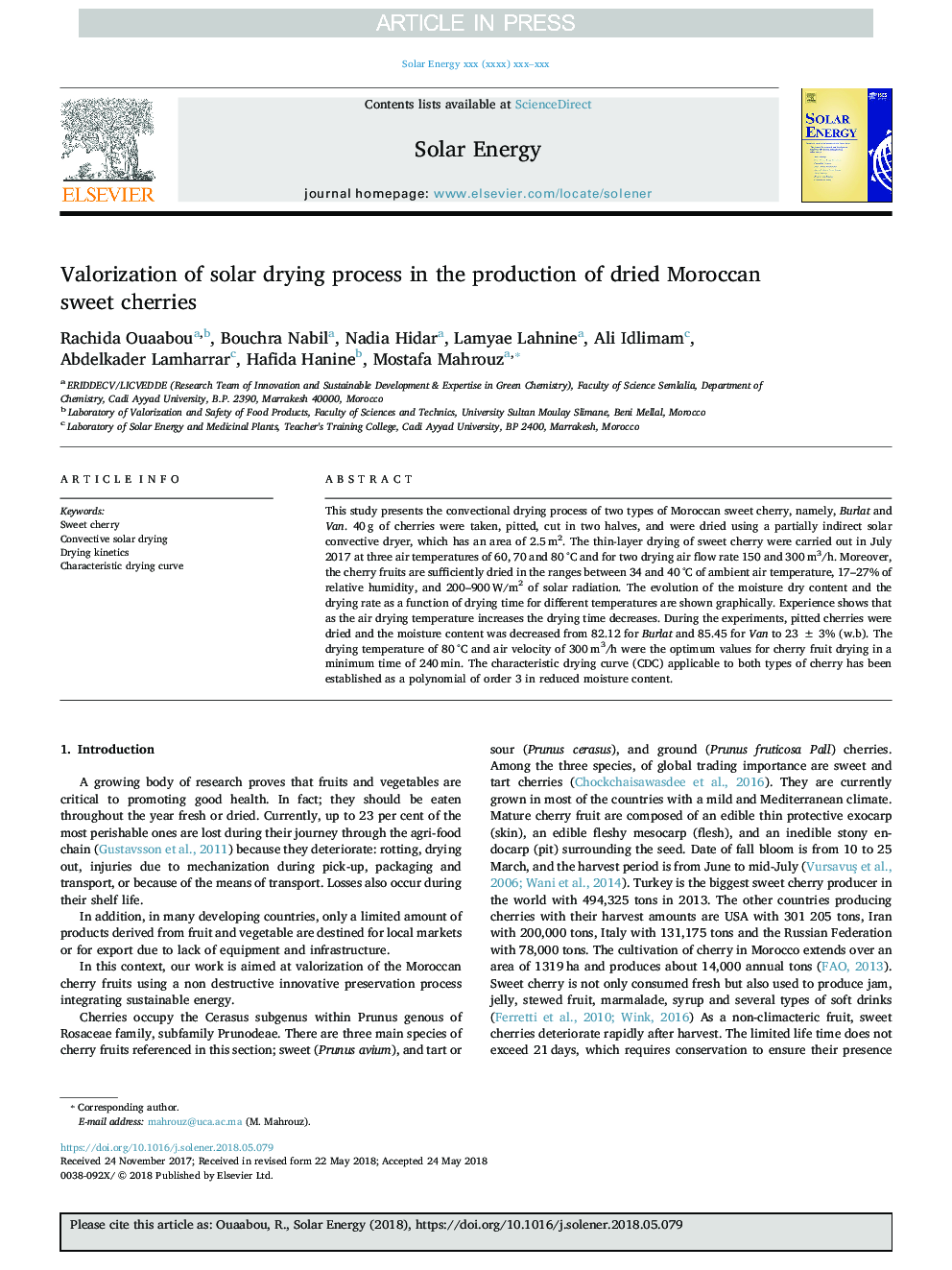| Article ID | Journal | Published Year | Pages | File Type |
|---|---|---|---|---|
| 11011421 | Solar Energy | 2018 | 7 Pages |
Abstract
This study presents the convectional drying process of two types of Moroccan sweet cherry, namely, Burlat and Van. 40â¯g of cherries were taken, pitted, cut in two halves, and were dried using a partially indirect solar convective dryer, which has an area of 2.5â¯m2. The thin-layer drying of sweet cherry were carried out in July 2017 at three air temperatures of 60, 70 and 80â¯Â°C and for two drying air flow rate 150 and 300â¯m3/h. Moreover, the cherry fruits are sufficiently dried in the ranges between 34 and 40â¯Â°C of ambient air temperature, 17-27% of relative humidity, and 200-900â¯W/m2 of solar radiation. The evolution of the moisture dry content and the drying rate as a function of drying time for different temperatures are shown graphically. Experience shows that as the air drying temperature increases the drying time decreases. During the experiments, pitted cherries were dried and the moisture content was decreased from 82.12 for Burlat and 85.45 for Van to 23â¯Â±â¯3% (w.b). The drying temperature of 80â¯Â°C and air velocity of 300â¯m3/h were the optimum values for cherry fruit drying in a minimum time of 240â¯min. The characteristic drying curve (CDC) applicable to both types of cherry has been established as a polynomial of order 3 in reduced moisture content.
Related Topics
Physical Sciences and Engineering
Energy
Renewable Energy, Sustainability and the Environment
Authors
Rachida Ouaabou, Bouchra Nabil, Nadia Hidar, Lamyae Lahnine, Ali Idlimam, Abdelkader Lamharrar, Hafida Hanine, Mostafa Mahrouz,
